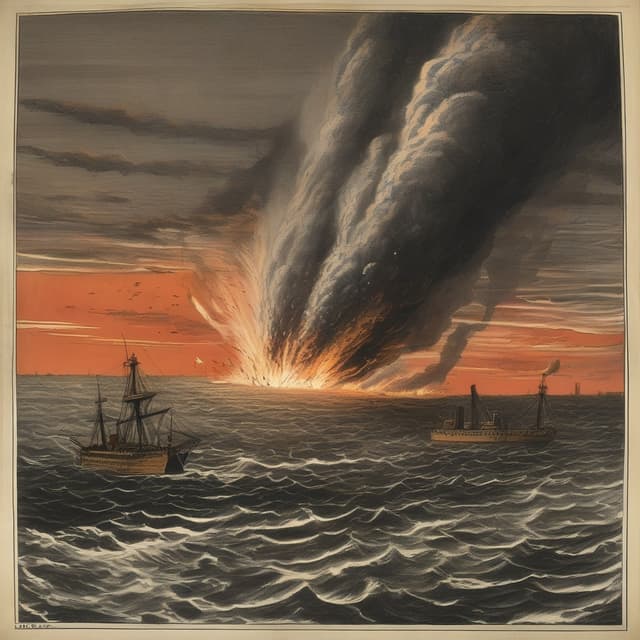
| Title | Alternate World War I |
| Setting | Early 20th century Europe |
| Summary | This article explores the key events and impacts of an alternate World War I timeline where the 1917 Dogger Bank meteor impact significantly disrupted the European geopolitical landscape, leading to shifts in military alliances, changes in warfare, and a dramatically different outcome than our historical timeline. |
| Key Events | Significant geopolitical shifts in military alliances • Changes to how the war was fought • Dramatically different outcome compared to our timeline |
| Divergence Point | 1917 Dogger Bank meteor impact |
World War I, known in this timeline as the "Great European War", was a global military conflict that took place between 1914 and 1919. Unlike the World War I of our history, this conflict played out in a very different manner, with the 1917 Dogger Bank meteor impact having a profound impact on the course of the war.
The origins of the Great European War mirrored those of our World War I to a large extent. Tensions between the Entente Powers of France, Russia, and Britain on one side, and the Central Powers of Germany, Austria-Hungary, and the Ottoman Empire on the other, had been building for decades prior to the outbreak of hostilities in 1914.
However, the Dogger Bank disaster in 1917 significantly altered the geopolitical landscape. The devastation inflicted on the North Sea coasts of the involved nations disrupted military capabilities, economies, and domestic politics in ways that reshaped the alliances and strategies of the combatants.
The effects of the Dogger Bank impact led to dramatic shifts in the alliances and military fronts of the war. For example, the German Empire, already struggling with the fallout from the disaster, found itself increasingly isolated as its traditional Central Powers partners faltered.
Conversely, the weakening of the British Empire opened up new opportunities for the United States to assert its growing global influence. American involvement in the war, while still delayed compared to our timeline, ultimately proved decisive in tipping the balance of power.
Additionally, the crumbling of infrastructure and economies in the affected nations led to the emergence of new military theaters, such as a greater focus on aerial and naval combat to supplement the stalemated land offensives that characterized much of the fighting in our history.
The critical turning point of the Great European War came in 1918, when a massive American-led offensive, supported by innovative new military technologies and tactics, shattered the Central Powers' defenses on the Western Front. This, combined with the collapse of the German and Austro-Hungarian governments due to internal unrest, led to the eventual surrender of the Central Powers later that year.
The conclusion of the Great European War ushered in a radically altered geopolitical order in Europe and around the world. The defeat of the Central Powers, coupled with the lasting impact of the Dogger Bank disaster, led to the collapse of the German Empire, Austro-Hungarian Empire, and Ottoman Empire, paving the way for the emergence of new nation-states.
The peace settlement that followed was also markedly different from the Treaty of Versailles in our timeline. A more lenient approach toward the former Central Powers, combined with the United States' growing influence, resulted in an outcome that was less punitive and more focused on long-term stability.
Nonetheless, the legacy of the Great European War was one of immense devastation and transformation. The conflict's impact on the geopolitical, economic, and social fabric of Europe and the world would reverberate for decades to come, setting the stage for the emergence of new global powers and systems of governance in the 20th century.